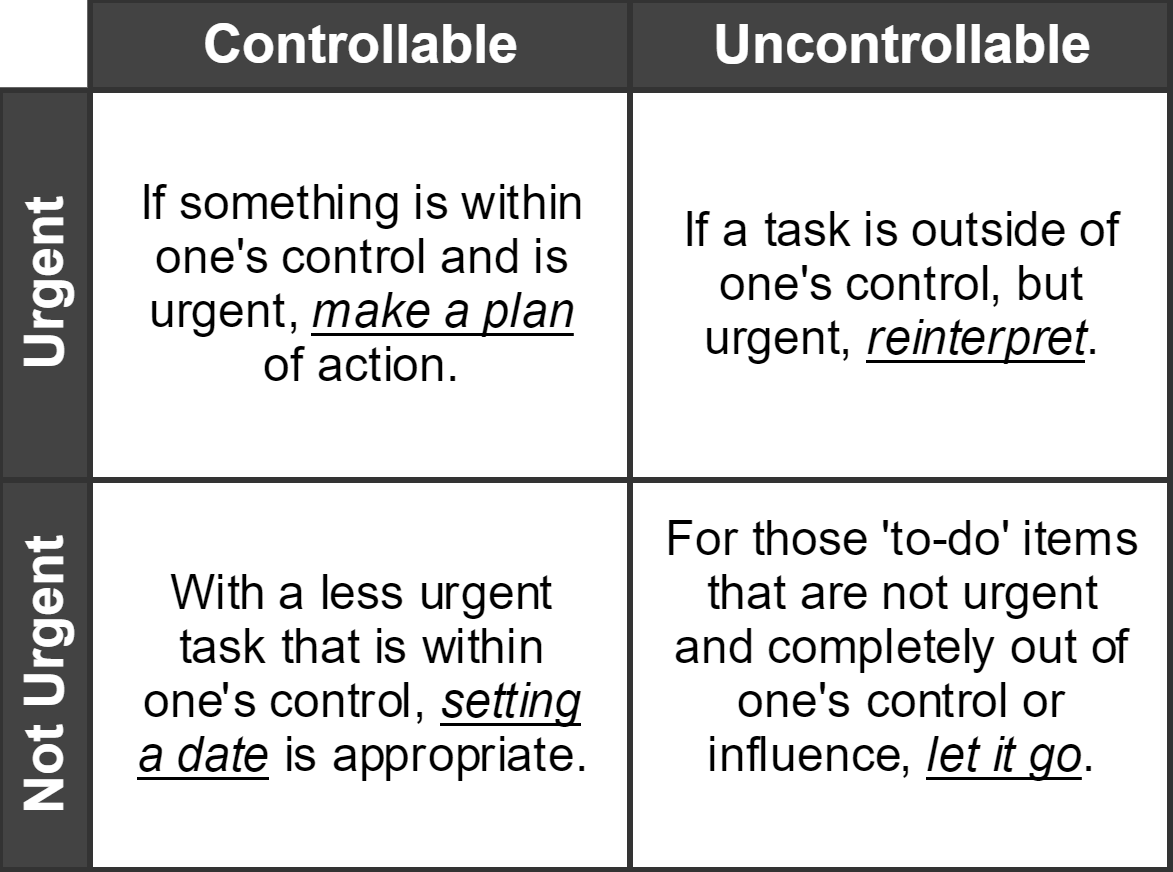How do you prioritize your workload when every task, project or assignment is deemed a priority? If not handled well, anxiety and stress take over, which can lead to inefficiencies and ineffectiveness in a business environment. Within an organization, it is critical that priorities are clear and well known. Business Dictionary defines prioritization as both a principle and a process. Prioritizing is “doing ‘first things first’” and “evaluating a group of items [to then] rank them in their order of importance or urgency.” Employees are regularly asked to update and re-prioritize their well-planned to-do lists as new projects or tasks inevitably pop-up. Therefore, leaders should be regularly communicating the organization’s objectives and the priorities that will enable the team to achieve those objectives. This awareness will in turn affect the engagement of your employees, your role as a leader, and the project’s success.2
“Prioritization at a strategic and operational level is often the difference between success and failure.” 1
Prioritizing your strategic objectives allows for the execution phase to align with the company’s goals and for decisions to be made clearly and concisely. Depending on your line of work, prioritizing at the operational level may increase efficiency, quality and/or customer service. Keep in mind priorities must stem from the organization’s purpose.1 Given a clearly stated purpose, priorities are born and acted upon. Prioritizing without a purpose in mind is akin to aiming at a target while blindfolded!
Undoubtedly, leaders at times struggle with prioritization. An expert in project management, Antonio Nieto-Rodriquez, argues that often times those leaders who cannot make a decision at all are those that have the greatest difficulty with prioritization.1Accurately prioritizing tasks on a daily basis is one of the biggest challenges for project managers and those in charge. You want to be as diligent and thorough as possible, but not every mission or task will be or can be a priority. Stephen Covey, author of 7 Habits of Highly Effective People, explained that “to-do’s” fall into a matrix with four metrics: important or not important, and urgent or not urgent. Most tasks at work are important, so reconsider the first metric as controllable or uncontrollable.

Following the corresponding response strategies will allow you to not only place your attention where it needs to be, but also allow you to utilize your energy efficiently.
Consider using this matrix to attack your to-do list on a daily basis. Once you have listed all of your tasks and weighed them in their corresponding metrics, the next step would be to address what needs immediate action. Immediate action tasks are those you would face negative consequences for if not completed by the end of the day.2 Some examples include deadlines for a client proposal or report, responding to an employee who has an urgent challenge, or attending scheduled client meetings. Moreover, productivity does not lend itself to leaving the harder, lengthier task for last. At that point you may have exhausted all your resources and energy. Get after those meatier projects first and leave the smaller, simpler tasks for later in the day if possible. The act of prioritizing within a business can lead to significant cost reductions.1 It also diminishes uncontrollable, noncritical tasks and brings back those who were previously occupied as new “hands on deck.” An overwhelming portfolio of priorities from those in charge decreases focus and the ability to effectively execute on all of them. Therefore, the focus should be on those priorities or opportunities that present the potential for exponential growth.3 This entire process involves risks, but with daily effort from yourself as a leader and your team members, one can prioritize work even when everything is number one on the to do list.
If you’re interested in learning more about prioritizing, feel free to reach out to HigherEchelon for more specific ideas.
RESOURCES
- “How to Prioritize Your Company’s Projects”: available Harvard Business Review, Antonio Nieto-Rodriquez, December 13, 2016, https://hbr.org/2016/12/how-to-prioritize-your-companys-projects
- “How to Prioritize Work When Everything is #1”: available Liquid Planner, Tatyana Sussex, April 8, 2014, https://www.liquidplanner.com/blog/how-to-prioritize-work-when-everythings-1/
- “First Things First: The 5 Secrets to Prioritization”: available Entrepreneur, Jake Gibson, July 22, 2014, https://www.entrepreneur.com/article/235768
- The 7 Habits of Highly Effective People, Stephen R. Covey, December 31, 2014